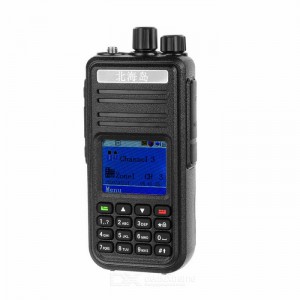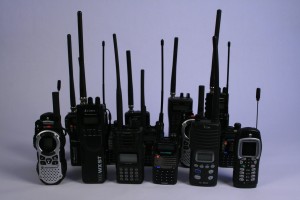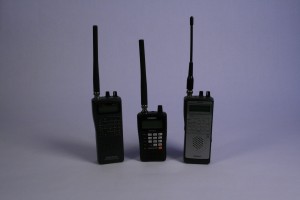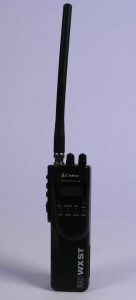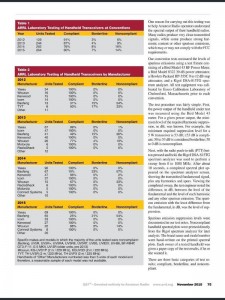What is Intelligence
Intelligence, in the context of this discussion, is the act of reducing uncertainty. For militias, neighborhood protection teams, mutual assistance groups and other small groups, intelligence is crucial in economy of effort.
“Economy of effort” is essentially “getting the most bang for your buck.”
Imagine the mission of: “Protect your home from looters after the storm”. Without any information, you don’t know where to focus observation, what to plan for, etc…. As we develop intelligence, we can reduce uncertainty, and better defend your home. If you know that the most likely looters will be young disenfranchised Swedish immigrants from the housing projects north of your neighborhood, you can be aware of what to look for. If you know the terrain of your area, then you can determine that the Swedish looters will come from one or two avenues of approach. This allows you to focus your observation there. Etc…
Pre-planning
While in “peacetime” or “DEFCON 4”, or “condition blue”, or whatever the operative term for “No immediate operations or threats,” there are a number of intelligence functions that should be carried out to be prepared for operations.
Intelligence Preparation of the Battlefield
One of the first tasks an intelligence section should carry out is Intelligence Preparation of the Battlefield (or IPB)
In IPB, you determine the area of operations (AO), area of interest (AI), Map terrain features and determine lanes of movement, and avenues of approach. Where are obstacles, etc…
Sam Culper has an Amazon ebook (more like a pamphlet) on Amazon, called “intelligence preparation of the battlefield”, as well as his book “SHTF Intelligence” and website https://readfomag.com/ that goes into much more depth.
There is also the army field manual 34-130 Intelligence Preparation of the Battlefield.
Other tasks that go with the IPB phase include defining the human terrain(Demographics, and where are people based on culture, economics, politics, etc), mapping infrastructure such as rail lines, power lines, gas lines, substations, pumping stations, water treatment, etc, and if your group has a capable signals section, mapping radio users, towers, frequencies, modes, etc.
Intelligence Database
In addition to IPB, your intelligence section should be developing an intelligence database.
In times past, filing cabinets, folders and index cards were the tool of choice. These days the most popular setup is a “wiki” type database. (Wikipedia is the most well known wiki) In fact, the U.S. Department of Homeland Security uses a “wiki” database called “Intelliwiki” as their national set-up. Regardless of what format you use, you should be collecting information on influences in your AO.
Categories of influences are people, groups, gangs, organizations, companies, etc… Gaining thorough information on these influences helps to reduce uncertainty.
For example, knowing that Ludvig Karlsson is the leader of the local Swedish criminal gang, means that an intelligence section can keep tabs on him, to get an idea of gang activities, instead of trying to watch the whole gang. (An example of “economy of effort”)
Operational Planning
Peacetime has ended, or you have gone to” DEFCON 3”, or “Condition Orange”, or whatever your group determines to be a heightened state of readiness. This elevation of readiness does not happen in a vacuum, it happens in response to something, and that “something” should help to define your intelligence requirements. Your group is going operational. At this point the intelligence section will start doing analysis, and in conjunction with leadership, determine priority intelligence requirements, (PIR’s), data gaps that need to be filled, developing human intelligence resources (aka spies and moles) within groups that you may have interest in, etc…
The who and what of this planning it this stage will be very dependent on your groups function and goals. A neighborhood protection team will be more interested in criminal gangs, and food supply, while a guerrilla/insurgent group will be more concerned with political groups and influences.
Analysis
Analysis is the process of taking known information about situations and entities of strategic, operational, or tactical importance, characterizing the known, and, with appropriate statements of probability, the future actions in those situations and by those entities.
An excellent book to get started in understanding analysis is: Intelligence Analysis, a Target-Centric Approach
Whole college courses are taught on analysis, and this discussion can not possibly cover all the information needed just to get started.
To briefly encapsulate the analysis process, what is known, and what is reported is evaluated to rate the reliability of the data, then that information is modeled, with the different possible outcomes of actions. Most likely course of action and most dangerous course of action are considered. “Wargaming” and “Red Teaming” may be used to play out COA’s,
Operational
Once your group is actually conducting a mission, or operational, the duties of the intelligence section get added to. The most common responsibilities include tracking friendly forces, enemy forces, other groups, weather, looking for trigger events, and any changes in the assumptions that were made in the analysis and planning phase, and advising leadership on any changes in expected COA’s. Just because you are operational does not mean the planning, and pre-planning stop. In fact it is when things are most fluid that keeping IPB’s, Intel DB’s, and models up to date can be the biggest help.
Putting it all together
Example 1: Neighborhood Protection Team
Background. Due to some un-named catastrophe, there is a break down in the rule of law. Government is non-functional, and your group is tasked with protecting the neighborhood from looters. You have done IPB, and built an intelligence database.
Defense of your location is the mission, so you develop some of the following PIR’s
Who are the most likely threats, and what are their capabilities and methods?
What is an indicator that a threat is imminent?
Because you have developed your intelligence database, you know that there are two criminal gangs that were functional during peacetime in your area.
The Swedish gang is the biggest, and their leader, Ludvig Karlsson drives a tricked out red Volvo SUV.
There is also a latino gang ran by someone called “El Hefe”. Many gang members have low-rider cars and compact pickups.
Because you have done a proper IPB, you know that there is only vehicle access to your neighborhood via 2 roads from the north. Travel on foot from the west is unlikely due to the swampy marsh on that side, and thick woods followed by another neighborhood to the south means that threat to you from that direction is unlikely without the southern neighborhood being attacked first. This knowledge allows to more economically marshal your resources to guard the two roads, and the exposed fields on the east. (This economy of effort, and you don’t totally discount the south and west, but you can devote significantly fewer resources to guarding them.)
A week into the catastrophe, you get a reliable report that a neighborhood 12 miles to the north of you was wiped out. The attackers are reported to have been Caucasian, and many were blond. A red tricked out Volvo SUV was seen. There were about 30 attackers. And they attacked around noon. They raped and looted, and killed everyone that was in the neighborhood, and then set it on fire.
A few days later a reliable report indicates that another neighborhood was attacked at night by about a dozen Hispanic looking men. They only looted, but did not hesitate to kill any who resisted. A low-rider pickup truck was cruising the area that afternoon.
A few days later, there is another report of a daylight raid and red Volvo SUV on one neighborhood that was burnt to the ground, and a night time raid by a Latino gang that happened after a low-rider pickup was seen in the area.
At this point we can “model” the behavior of the two gangs, and say that the most likely course of action by the Latino gang will involve a scout in a low rider pickup, and attack at night, while an attack by the Swedish gang will include a red Volvo SUV during the day.
We then determine that the most dangerous course of action (for us) is to be attacked by the Swedish gang, since they spare none, and burn everything to the ground. Being attacked by the Latino gang is also a dangerous course of action.
Knowing this we have a number of courses of action to consider, in order to make our plans.
Since you know that El Hefe is the leader of the Latino gang, you could specifically target him at his home (If you know where that is), but what will the gang do then? Will they escalate their violence? Is there a second in command that will step up and carry out the same raids? Or will they fall apart?
It is okay to say “I don’t know.” In fact it is preferred. Guessing or making stuff up is a recipe for disaster. A proper analysis needs the facts and data weighted correctly to be useful.
Not knowing what will happen to the Latino gang if El Hefe is taken out leads leadership to conclude it is not worth the risk of sending people out of the protection of the neighborhood to make the hit. Instead, they conclude that an advanced observation post (OP) to watch for low-riders, and red Volvos is a better risk/reward.
Several weeks in, your OP radios in that a tricked out red Volvo SUV, followed by about nine other cars just passed the OP en route to your neighborhood, about six miles away. You sound the alarm, and your neighborhood protection team moves to a prepared ambush site one mile north of the neighborhood. When the Volvo convoy gets into the killzone, the ambush is executed.
After most of the convoy is wiped out, you find Ludvig Karlsson and some other Swedish gang members among the dead and injured, along with a number of weapons, molotov cocktails, and forced entry tools. Mission success (for now)
Even with the one threat eliminated, the Intel team cannot stand down. Will the Latino gang attack? Will another group move in, or fill the void left by the Swedish gang? Will any survivors of the Swedish gang try to retaliate? (Will they even know who wiped them out, since the ambush was away from the neighborhood?) These are all issues the intelligence section must continue to work on.
Now imagine if the neighborhood protection team did not have an intelligence section or person?
The first hint of a raid would be when the raid happens. Most likely the neighborhood would have more casualties. They would not have the advantage of a well planned ambush, or early warning. Vehicles and houses would be damaged by the firefight. If molotovs are thrown, some houses may burn. If the defenders do not completely wipe out the Swedish gang, and they are driven back, they may come back for retribution. All a much more dangerous course of action.
Example 2: Intel in political action
Background: Your group is a state gun rights group trying to influence social and political action to remove current state firearms restrictions.
Your IPB will not focus on physical terrain, lanes of movement and avenues of approach, but instead focus on the human terrain. Where are the conservative and liberal neighborhoods? What areas of employment tend to have one political stripe work there? (For instance more liberals will work in the trendy hipster coffee shop section of town, while more conservative minded folks will be working in the industrial business park. ) Why does this matter? If you spend money on political advertising such as a billboard, putting one that resonates with conservatives in a conservative part of town is more effective than putting a conservative billboard in a liberal part of town.
Your database will have the politicians, their donors, businesses, and donor businesses. Other political activist groups (Both for and against), etc… This is used to leverage campaigns against the opponents donors and sponsors. A boycott of a gun grabbers major donor, may hurt their bottom line, and reduce their effectiveness.
Your analysis will focus on which groups to pressure, or what areas to market to will yield the biggest effect for political action. (Economy of effort again)
Example 3: Guerrilla / Insurgency
Background: You live in Dirka Dirka-stan, and due to the fact that the political establishment is so entrenched and in bed with big business, your attempts to peacefully effect the political process have failed, so your group decides to go kinetic.
Understanding the human terrain is essential!
There is a senator from Dirkafornia that is notoriously anti-rights and anti-gun. A lot of insurgents, if given the chance, would jump at the opportunity to kinetically remove the senator. However, if your intelligence section has done its homework, they may conclude that since the senator is from the city of Dirkfrancisco, that their likely successor will be just as bad as a gun grabber as the target. Additionally, we can model that after many political assassinations, there is a groundswell of sympathetic support for the deceased’s pet causes… so a kinetic action against the senator may actually produce the opposite of the desired effect, and get sympathy votes of “We should ban more guns, because that is what the senator would have wanted, in honor of them.”
Individual guerrilla actions may require an IPB for a specific action, such as an ambush or assasination.
Analysis is needed to look at the courses of action for success and failures of the mission so that the risks can be weighed. What are the third and fourth order effects? Will there be blowback? By whom? What will the public reaction be?
Conclusion
Intelligence is an important task for small tactical teams. It can mean the difference between success or failure. It can prevent the waste of life and resources. It drives the missions!
In an Army Infantry Brigade there is an intelligence company of about 60 people devoted to the task, which include network and computer technicians, Human Intelligence collectors, Signals Intelligence collectors, exploitation teams, analysts, synchronization and collection management sections, linguists, cryptanalysts, imagery analysts, database technicians, and more.
Additionally this company supports intelligence sections at brigade and battalion level.
This is a huge role to fill by one or couple of people that will make a small teams intelligence section. While you can not do everything a brigade intel company does, starting with the basics gets you a huge advantage over the unprepared.
For more links check the S2 section here:
DasBlinkenlight




